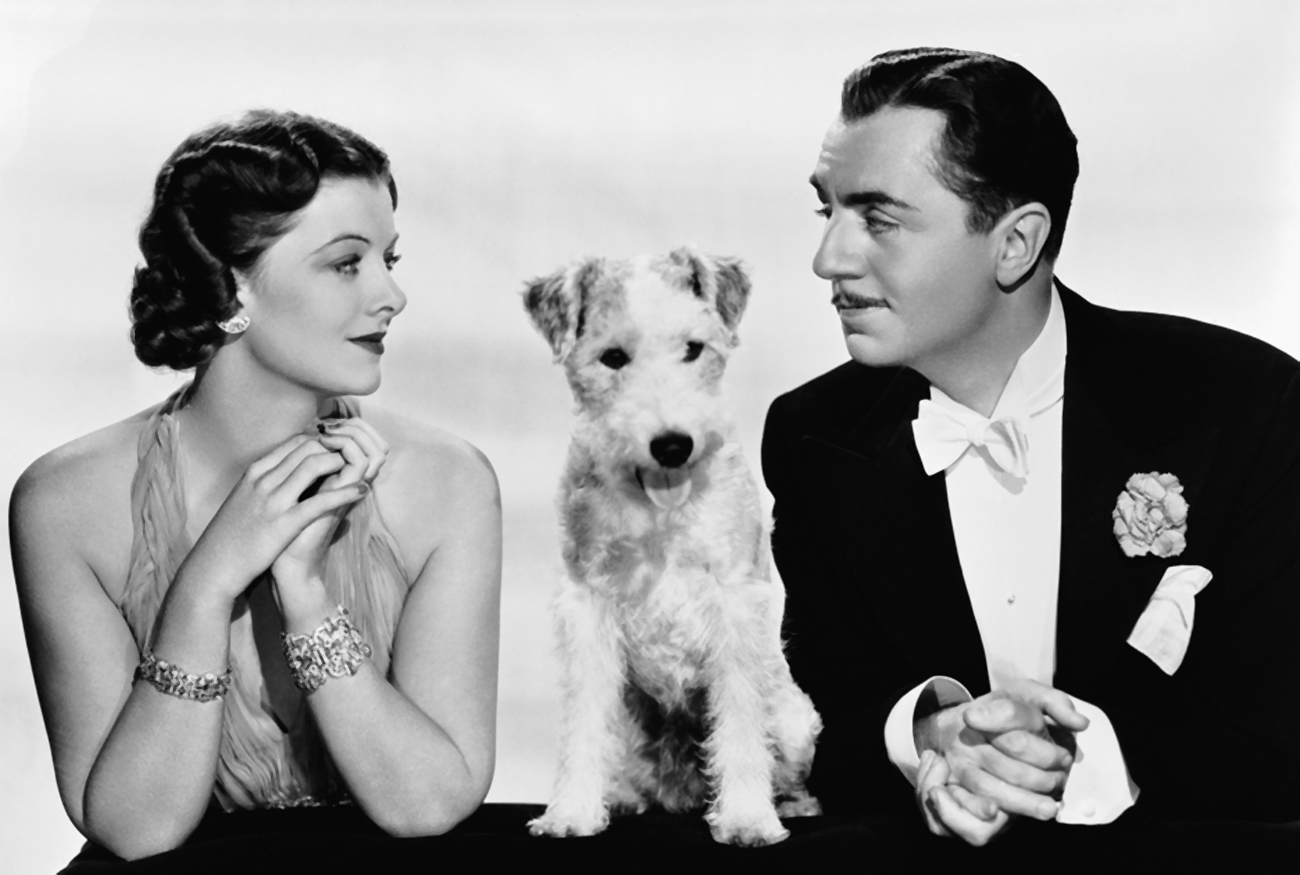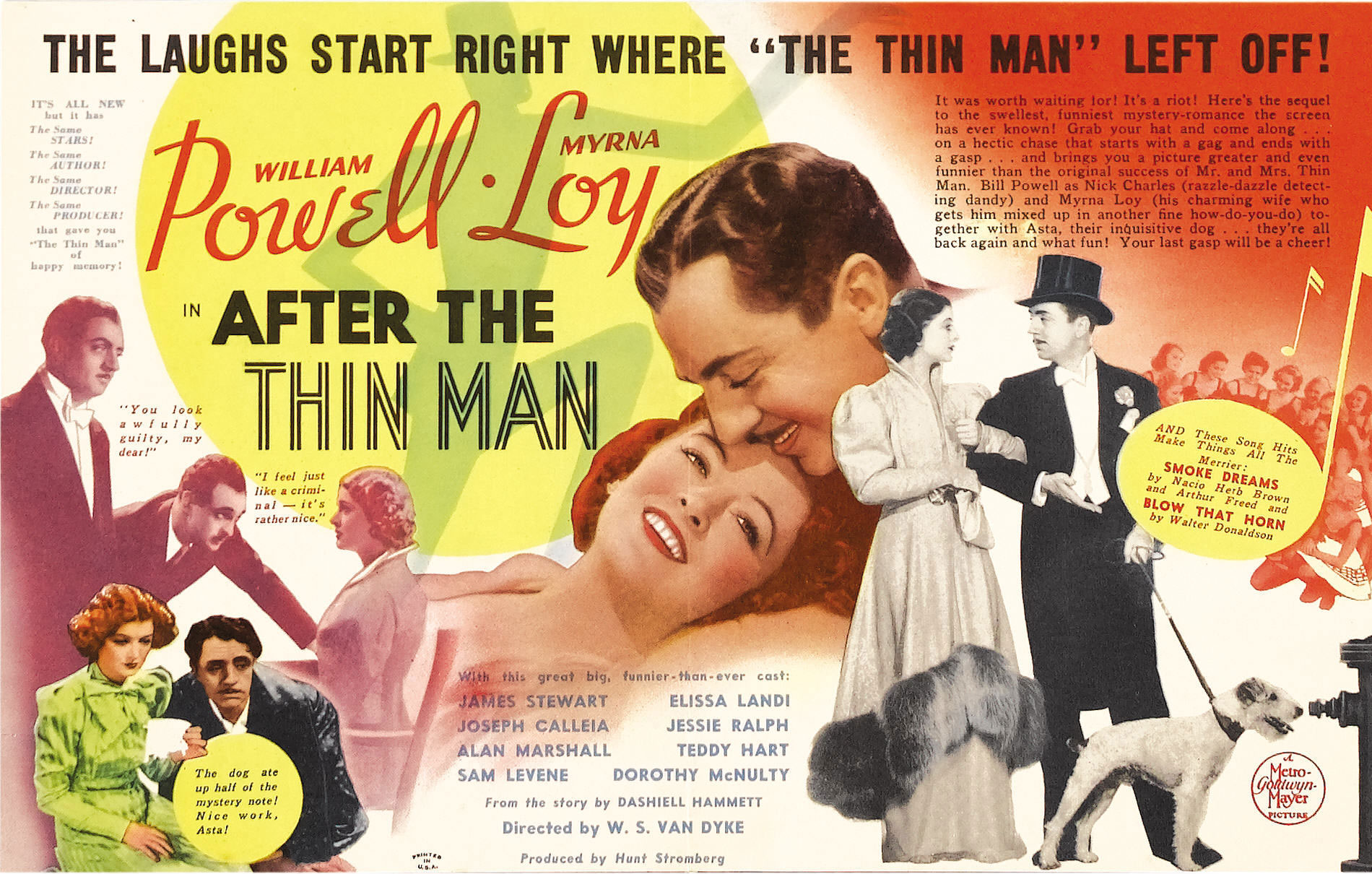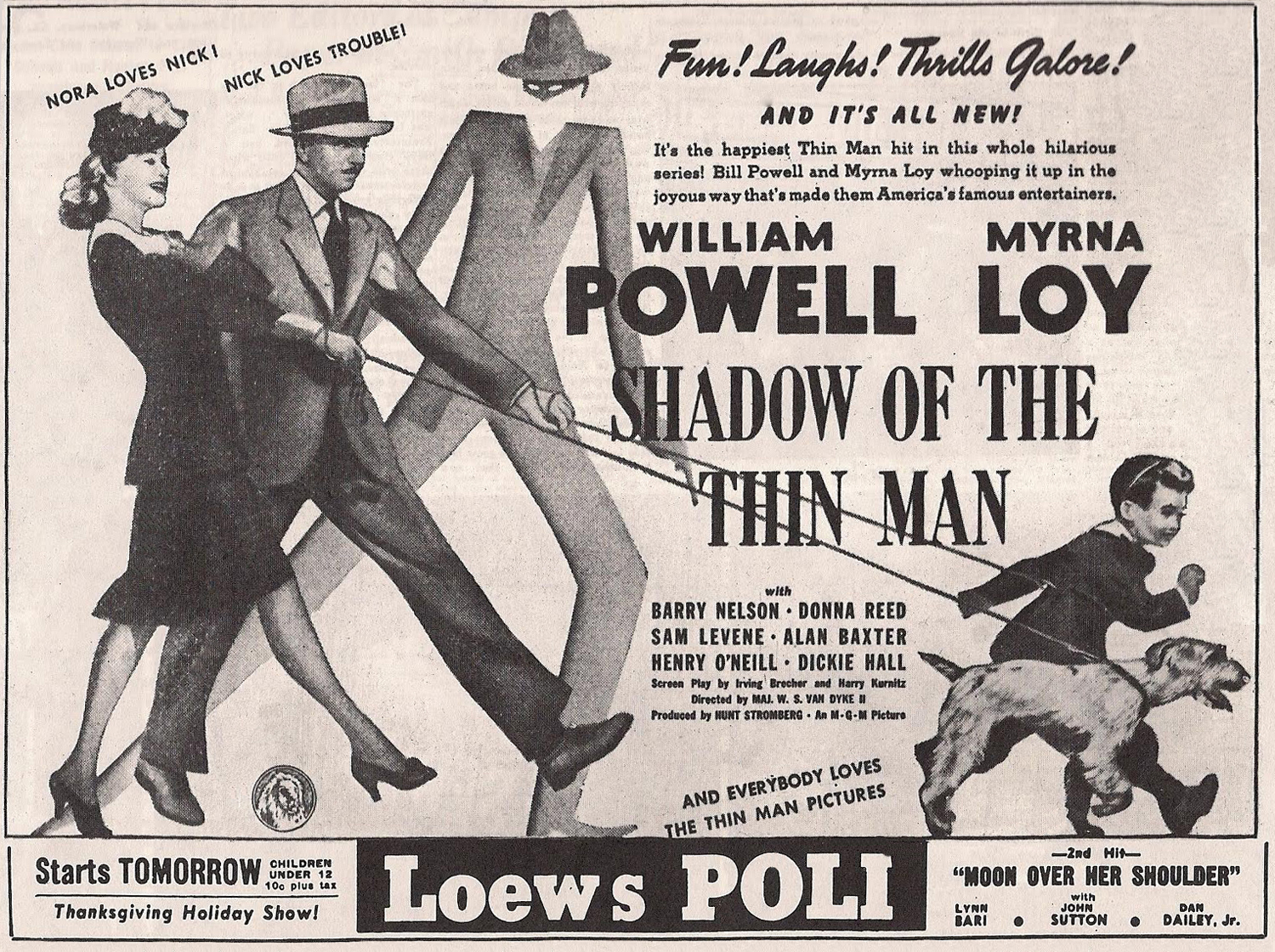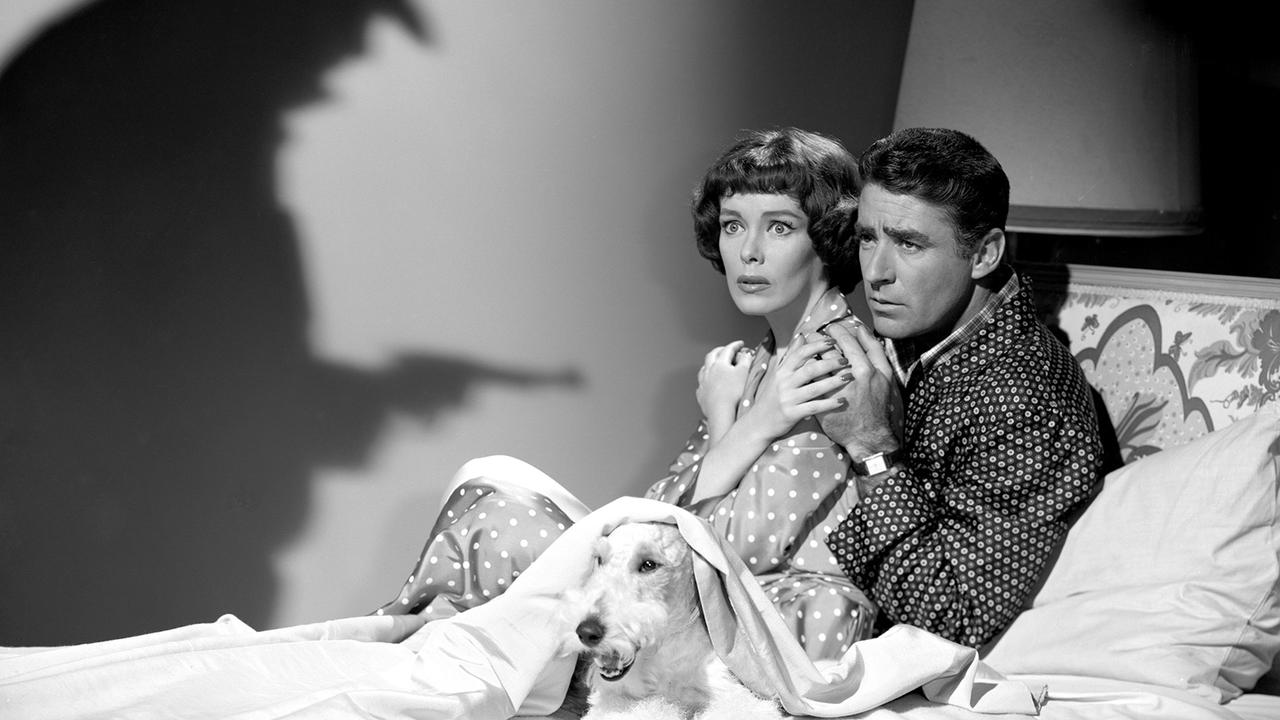“The Thin Man” was never meant to be a series of films, let’s get that straight right up front. The title doesn’t make reference to Nick or Nora Charles, the two main characters in the series, it makes reference to the murder victim in the first film. The successful pairing of Myrna Loy and William Powell and the incredible characters they play are what influenced the creation of a mystery series moving forward, with the Thin Man moniker connecting the films together, even though he never appears in the series again.
The Thin Man was originally the creation of author Dashiell Hammett, one of my all time favorites…so much so that I named one of my dogs after him. It was published first in the magazine Redbook in December 1933 and then came out in book form a month later. Now, he wrote just the one novel for the Thin Man, but submitted script drafts for 2 of the screenplays that followed for After the Thin Man and Another Thin Man and later in 2012 these two screenplays were turned into novellas for the book Return of the Thin Man. I thoroughly enjoyed his original 5 published novels, his screenplays as well as these later works published by his estate.
MGM loved the writing of Dashiell Hammett as well and went instantly into production on the movie as soon as the book was released and hired W.S. Van Dyke to direct and William Powell and Myrna Loy as the married detectives Nick and Nora Charles. Now a lot of the popularity of the series has to do with the pairing of these two actors who went on to do 14 films together with the The Thin Man series being only 6 of them, but I would like to add that it was another real married couple that has a lot to do with the popularity of the series and they never get the credit that is due them. It is the writers Albert Hackett and wife Francis Goodrich who would write and rewrite the first 3 movies and arguable the best of the series. They were wonderful writers in their own right and would go on to write the classics; It’s A Wonderful Life, the 2 Father Of The Bride movies, Seven Brides For Seven Brothers and of course, won the Tony Award and Pulitzer Prize for Drama for The Diary Of Anne Frank. The Hacketts were one of the most successful screenwriting partnerships in Hollywood history. From the time they got married in 1931, until their retirement in 1962, they turned out in excess of 30 scripts, mostly comedies and musicals.
Director W. S. Van Dyke (One-Take Woody) was given 3 weeks to shoot the film and he surprised everyone by bringing it in under budget and in only 12 days! It was a major hit at the box office and brought in 6 times it’s budget when it was released originally to theaters. I posted before about the film The Prizefighter and the Lady, which was directed by W.S. Van Dyke and starred Myrna Loy. He also directed Loy and William Powell in Manhattan Melodrama and because of the success of The Thin Man would direct them in 4 of the sequels. William Powell spoke of how much he loved working with Myrna Loy because of her naturalness, her professionalism, and her lack of any kind of “diva” temperament. “When we did a scene together, we forgot about technique, camera angles, and microphones. We weren’t acting. We were just two people in perfect harmony,” he said. “Myrna, unlike some actresses who think only of themselves, has the happy faculty of being able to listen while the other fellow says his lines. She has the give and take of acting that brings out the best.” W.S. Van Dyke paid attention to William Powell and Myrna Loy’s easy banter between takes and their obvious enjoyment of each other’s company and worked it into the movie. The director often encouraged and incorporated improvisation and off-the-cuff details into the picture.
Although the “Thin Man” of the title was the murdered man, Clyde Wynant, fans of the picture and the subsequent series began to refer to the Nick Charles character as “The Thin Man,” and all subsequent films included “The Thin Man” in their titles. After the Thin Man (1936) was the second film in the series and reunited the 2 leads with their director and added James Stewart to the cast. Though William Powell and Myrna Loy were very close friends off-screen, their only romantic moments together occurred on-screen. The public, however, was determined to have them married in private life as well. When the two stars showed up in San Francisco (where most of this film was shot) at the St. Francis, the hotel management proudly showed “Mr. and Mrs. Powell” to their deluxe suite. This was an especially uncomfortable moment as Jean Harlow, who was engaged to Powell, was with them, and the couple had not made a public statement about their relationship. Harlow saved the day by insisting on sharing the suite with Loy: “That mix-up brought me one of my most cherished friendships,” Loy said in “Being and Becoming”, her autobiography. “You would have thought Jean and I were in boarding school we had so much fun. We’d stay up half the night talking and sipping gin, sometimes laughing, sometimes discussing more serious things.” Meanwhile, Powell got the hotel’s one remaining room – a far humbler accommodation downstairs.
The next film was Another Thin Man (1939), and again featured the same writers, director and lead actors Loy and Powell. Two tragedies befell William Powell before the making of this film: the unexpected death of his fiancé Jean Harlow, and a difficult battle with colon cancer that required colon bypass surgery and new radiation treatments. Production of this “Thin Man” movie was delayed as a result, but Powell and Loy were given a standing ovation when he finally returned to join her on the set for filming. Shadow of the Thin Man (1941) followed a few years later without the writers Hammet, Hackett and Goodrich. Living up to his nickname, One-Take Woody, W.S. Van Dyke filmed this one in just 2 weeks.
The Thin Man Goes Home (1945) was next and absent was director W.S. Van Dyke. A lot was changed due to the war, for example the heavy drinking in the film series was curtailed in this entry due to wartime liquor rationing and the film was delayed because Loy went to New York to marry car rental heir John Hertz Jr. and was busy working for the Red Cross war effort. 2 years after that came the last one in the series, The Song of the Thin Man (1947). This one is fun due to the appearance of incredible character actor Keenan Wynn and little Dean Stockwell as Nick Charles Jr. Ten years later would come a delightful TV Show of The Thin Man (1957), starring Peter Lawford as Nick and Phyllis Kirk as Nora. I miss Powell and Loy to be sure, but the TV show is fun and has a great tone unique all to itself. I think it’s a worthy mention in the series. You also have to wonder if the series was an inspiration to Hart To Hart (1979) with Robert Wagner and Stephanie Powers that came later. I loved that show as well.

